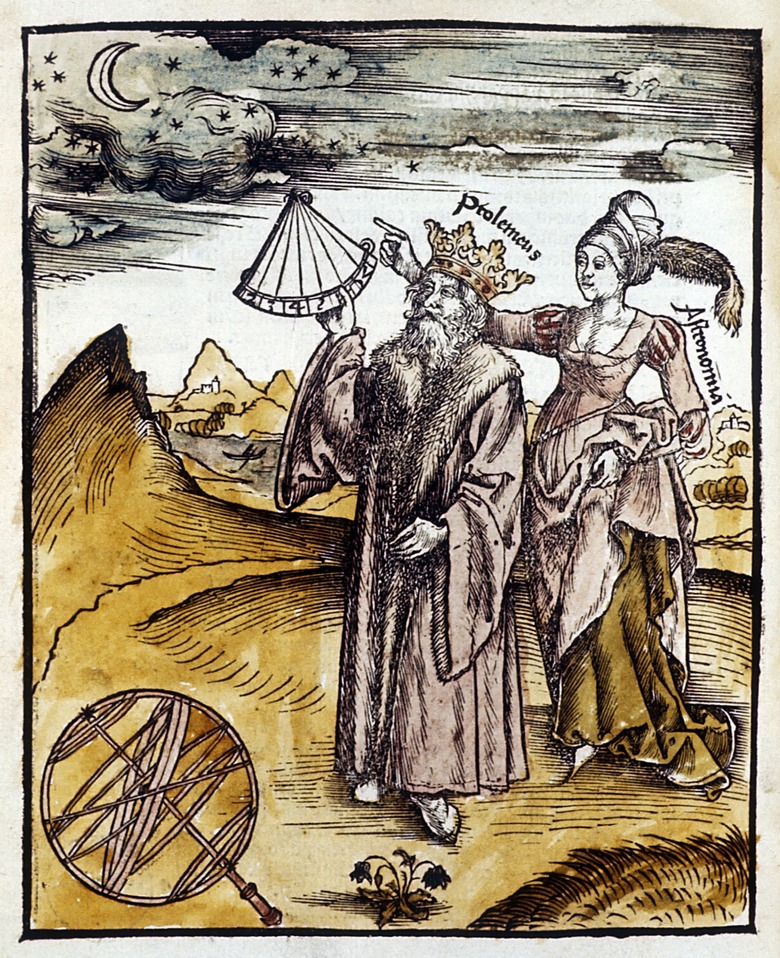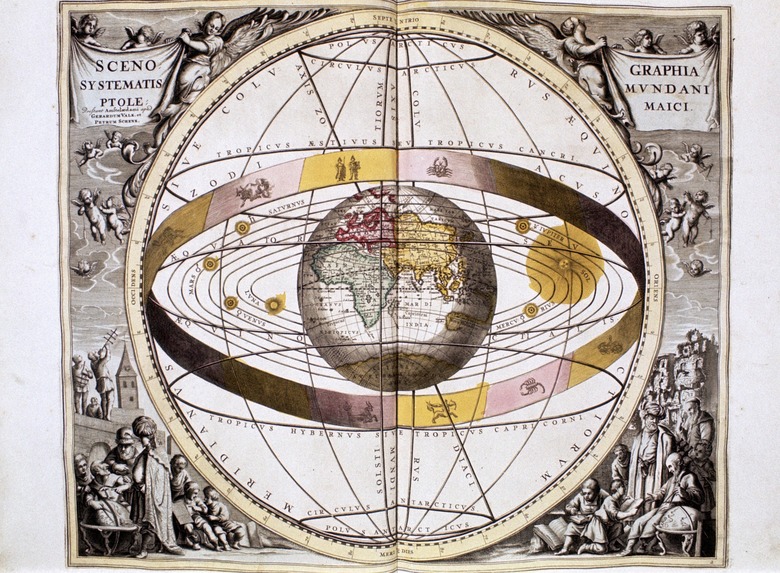Short Summary Of Ptolemy's Discoveries
Claudius Ptolemaeus, known as Ptolemy, was a Greco-Roman citizen in Alexandria, Egypt, who lived between roughly 100 and 170 A.D. A polymath of enormous repute with influences across the sciences, Ptolemy is identified varyingly as an astronomer, a mathematician, a geographer and cartographer. His most notable accomplishments were in astronomy, with his advancement of the theory of epicycles, and as a geographer.
Ptolemy's Influence on Astronomy
Ptolemy's Influence on Astronomy
While most of Ptolemy's theories about the universe were ultimately proved incorrect, he provided a foundation on which future scientists could build their own theories.
In the book Amalgest, Ptolemy provided a blend of mathematics and geography in which he sought to provide a model for astronomical functions and the movement of heavenly bodies using his theory of epicycles. This theory proposed that earth was the center of the universe and that all other planets and stars orbited our planet in a broadening system of rings.
Ptolemy's portrait of epicycles was the most astute astronomy theory of its time. The influential Amalgest was accompanied by another volume, Tetrabiblos, which assumed an equal authority on the then-serious study of astrology.
Ptolemy's Take on Epicycles
Ptolemy's Take on Epicycles
Aristotle maintained that the universe was comprised of 55 concentric circles of which the Earth was the center. He posited that planets were attached, in their orbit, to these widening circles called "epicycles" and that, like the turning of gears, these planets moved smoothly along a designated track. This theory, however, did not account for the varying brightness of planets in motion.
Ptolemy's intervention was to suggest that there were smaller epicycles attached to any of those larger concentric rings observed by Aristotle, and that these smaller epicycles maintained an orbit of their own accord, their own pacing and direction, independent of the larger epicycle to which they were attached.
Ptolemy's "Geographica"
Ptolemy's "Geographica"
Ptolemy's seven-volume tome Geographica was what we would today call an atlas, a dense and laborious catalog of maps.
While most of its maps have been lost, its index remains, and one of the book's defining characteristics is that Ptolemy offers methods by which the reader might create their own maps. He encourages that they do so, explaining the application of latitude and longitude and how a map ought to be structured (one of the lasting Ptolemaic influences on cartography is the use of the compass, with north pointing toward the top of the page, south to the bottom), in the hope that his work might be refined by his readers.
Ptolemy Himself, and Astrology as a Science
Ptolemy Himself, and Astrology as a Science
Little of Ptolemy's life was recorded save for a rough estimate of his life span, his birth, and where he lived. Scholars have gleaned from his writing, however, that he was widely familiar with the philosophy of his time, was deeply appreciative of the arts, and ascribed to some measure of spirituality.
While he approaches astrology as a natural science (whereby the movement of planets altars our cosmic environment and, accordingly, our moods and fates), void of mysticism, he does acknowledge in the Tetrabiblos that when he observes the stars, takes heed of their function and grandeur, he feels himself in the company of Zeus and other gods.
Cite This Article
MLA
Sorondo, Alex. "Short Summary Of Ptolemy's Discoveries" sciencing.com, https://www.sciencing.com/short-summary-ptolemys-discoveries-11125/. 24 April 2017.
APA
Sorondo, Alex. (2017, April 24). Short Summary Of Ptolemy's Discoveries. sciencing.com. Retrieved from https://www.sciencing.com/short-summary-ptolemys-discoveries-11125/
Chicago
Sorondo, Alex. Short Summary Of Ptolemy's Discoveries last modified August 30, 2022. https://www.sciencing.com/short-summary-ptolemys-discoveries-11125/

